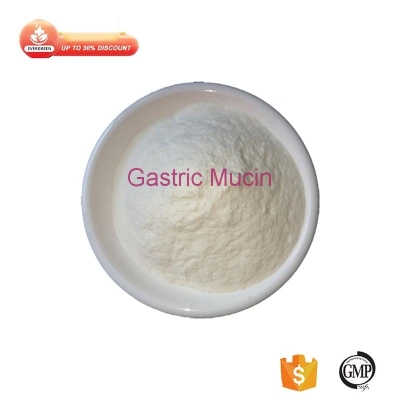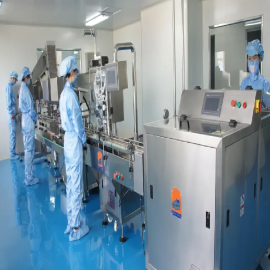-
Categories
-
Pharmaceutical Intermediates
-
Active Pharmaceutical Ingredients
-
Food Additives
- Industrial Coatings
- Agrochemicals
- Dyes and Pigments
- Surfactant
- Flavors and Fragrances
- Chemical Reagents
- Catalyst and Auxiliary
- Natural Products
- Inorganic Chemistry
-
Organic Chemistry
-
Biochemical Engineering
- Analytical Chemistry
- Cosmetic Ingredient
-
Pharmaceutical Intermediates
Promotion
ECHEMI Mall
Wholesale
Weekly Price
Exhibition
News
-
Trade Service
For medical professionals only
The burden of hepatitis D in Xinjiang is heavy and needs urgent attention!
Professor Lu Xiaohuan introduced that
hepatitis D is a liver disease caused by hepatitis D virus (HDV) infection, and patients with HBV combined with HDV infection have a higher risk of adverse outcomes compared with hepatitis B virus (HBV) monoinfection [1]
。 However, worldwide, the epidemiology of HDV is inconclusive
.
According to the data of recent years, about 4.
5%-14.
6% of HBsAg-positive patients worldwide are co-infected with HDV [2-4], and there are certain differences between different countries and regions [5].
A previous multi-center study in China found that HDV positivity mostly appeared in ethnic minority areas, among which Inner Mongolia and Xinjiang were high-prevalence areas for HDV [6].
The harm posed by hepatitis D virus is not receiving enough attention
at present.
In order to improve the flow regulation data and disease burden assessment of hepatitis D in China, our team conducted a study
on the prevalence and clinical characteristics of HBV infection in different clinical types, HBV viral load and HBsAg levels in Xinjiang.
The findings were presented at the just-concluded 73rd Annual Meeting of the American Association of Liver Diseases (AASLD 2022) [7].
This single-center study screened 264 hospitalized patients with HBV infection admitted to the Infection Center of the First Affiliated Hospital of Xinjiang Medical University between August 2021 and January 2022, including 243 HBsAg-positive patients and 21 HBsAg-negative HBV-associated cirrhosis and/or hepatocellular carcinoma (HCC), with 76% men (200/ 264, average age 52.
53±11.
90 years), 78% of patients are Han Chinese, the rest are Uyghur, Mongolian, Hui and other ethnic minorities
.
All patients were tested
for HDV antigen (HDV-Ag), antibodies (HDV-IgM, HDV-IgG), and HDV RNA after enrollment.
The study grouped patients according to the degree of liver disease progression, HBV DNA and HBsAg levels, and further analyzed
the prevalence of HDV infection in each group.
The results showed that there were 46 patients with positive HDV serological markers (HDV-Ag and/or HDV-IgM and/or HDV-IgG) and HDV RNA test results, of which 36 were born in Xinjiang and lived there for a long time, 15 patients had a family history of HBV infection, and none had a history
of intravenous drug use 。 Overall, the positive rate of HDV serological markers was 13.
64% (36/264) and the positive rate of HDV RNA was 9.
85% (26/264).
According to the degree of progression of liver disease, the positive rates of HDV serum markers were 13.
46%, 12.
43% and 20.
83% in patients with chronic hepatitis B (CHB), HBV-related cirrhosis, HCC (n=185) and liver failure (n=24).
The positive rates of HDV RNA were 11.
54%, 8.
11% and 20.
83%, respectively, and there was no significant difference between the three groups (P>0.
05).
According to different HBV DNA levels, the positive rates of HDV serum markers were 17.
15%, 7.
81%, and 6.
67%, respectively, in patients with HBV DNA levels below 20 IU/mL, HBV DNA levels between 20-2,000 IU/mL, and HBV DNA levels above 2,000 IU/mL.
There was no significant difference between the three groups (P>0.
05); The positive rates of HDV RNA were 9.
47%, 10.
94% and 10%, respectively, and there was no significant difference between the three groups (P>0.
05).
According to different HBsAg levels, the positive rates of HDV serum markers were 14.
29%, 16.
67% and 10.
85%, respectively, in patients with HBsAg levels below 0.
05-250 IU/mL, HBsAg levels higher than 250 lU/mL.
The positive rates of HDV RNA were 4.
76%, 8.
77% and 11.
63%, respectively, and there was no significant difference between the three groups (P>0.
05).
Overall, this single-center study found that in Xinjiang, China, the positive rate of HDV serological markers was 13.
64%, and the positive rate of HDV RNA was 9.
85%, higher than the 3.
9% (HDV antibody positivity rate) reported in previous studies [6].
This also suggests that in the future, it is still necessary to expand the scope of screening population to further clarify the real situation of the epidemic of HDV infection in Xinjiang, and further research on HDV genotype, relationship with disease progression, impact on prognosis, specific prevalence in liver cirrhosis, liver cancer, and treatment is needed to better prevent and treat chronic hepatitis
D.
References: [1]Da B L, Heller T, Koh C.
Hepatitis D infection: from initial discovery to current investigational therapies[J].
Gastroenterology Report, 2019, 7(4): 231-245.
[2]Miao Z, Zhang S, Ou X, et al.
Estimating the global prevalence, disease progression, and clinical outcome of hepatitis delta virus infection[J].
J Infect Dis, 2020, 221(10): 1677-1687.
[3]Chen H Y, Shen D T, Ji D Z, et al.
Prevalence and burden of hepatitis D virus infection in the global population: a systematic review and meta-analysis[J].
Gut, 2019, 68(3): 512-521.
[4]Stockdale A J, Kreuels B, Henrion M Y R, et al.
The global prevalence of hepatitis D virus infection: Systematic review and meta-analysis[J].
JHepatol, 2020, 73(3): 523-532.
[5]Vlachogiannakos J, Papatheodoridis G V.
New epidemiology of hepatitis delta[J].
Liver International, 2020, 40: 48-53.
[6]Roggenbach I, Chi X, Lempp F A, et al.
HDV seroprevalence in HBsAg-positive patients in China occurs in hotspots and is not associated with HCV mono-infection[J].
Viruses, 2021, 13(9): 1799.
[7]Zheng RJ, Lu XB.
Prevalence and clinical characteristics of hepatitis D among HBV infected patients in Xinjiang, China.
Abstract 1003 AASLD 2022.
Past Highlights
1.
Not to be underestimated! A comprehensive understanding of hepatitis D starts with virology
2.
Don't be careless! Chronic hepatitis D disease progresses rapidly and long-term clinical outcomes are worrying
3.
Comprehensive analysis of domestic and foreign epidemiological data, the number of hepatitis D cases may be underestimated
4.
Standardize the diagnosis and treatment of viral hepatitis and screen first: analysis of the epidemic status and clinical characteristics of hepatitis D in southwest China in the past decade
5.
Do you know all these new developments in hepatitis D screening and testing?
6.
Do you know the targets of anti-HDV drugs? Let's take a look at the treatment of hepatitis D and the progress of new drugs under development!
7.
Professor Niu Junqi: The latest progress of the investigation of the epidemic status of hepatitis D in China|CSID2022
with AI medical assistant "Xiaozhi"Welcome to "Jizhi Doctor"
This information is for medical and scientific reference only and is not recommended for use in any manner inconsistent with the prescribed information approved in your country.







